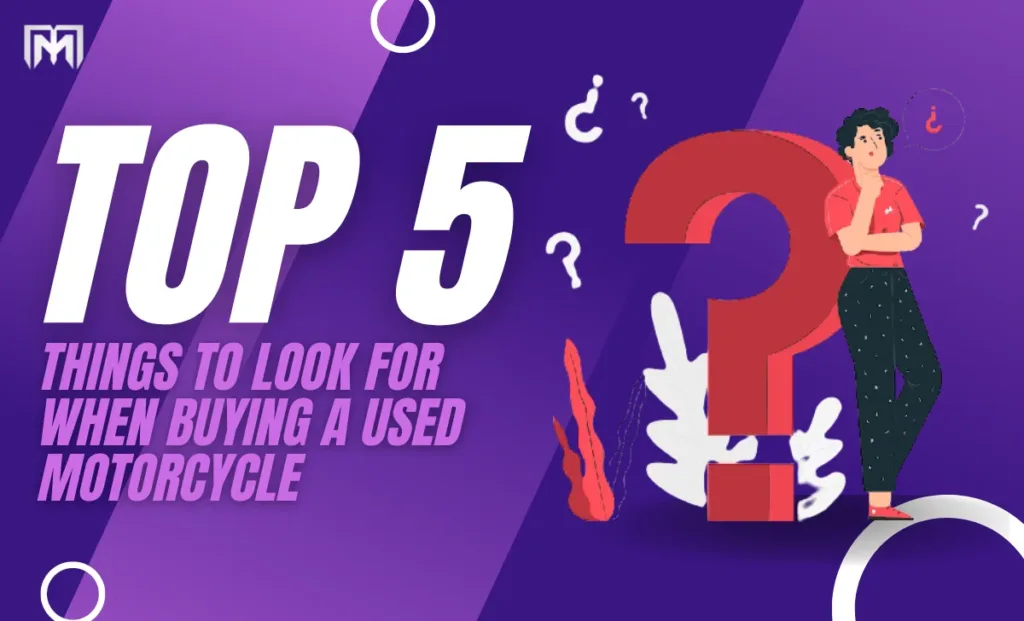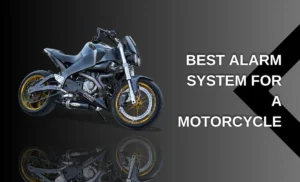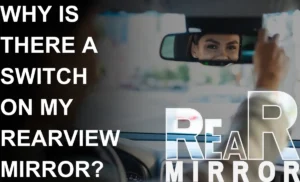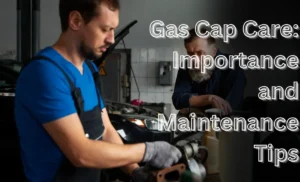Embarking on the thrilling journey of purchasing a used motorcycle opens up a world of possibilities. Finding the ideal pre-owned treasure may be an exciting experience, whether you’re an experienced rider looking for a new adventure or a beginner wanting to appreciate the freedom of the wide road. However, amidst the sea of options, navigating the path to motorcycle nirvana requires a discerning eye and expert guidance. Fear not, for this invaluable article unveils the top five game-changing factors to consider when purchasing a used motorcycle.
CONTENTS
1. Odometer Reading
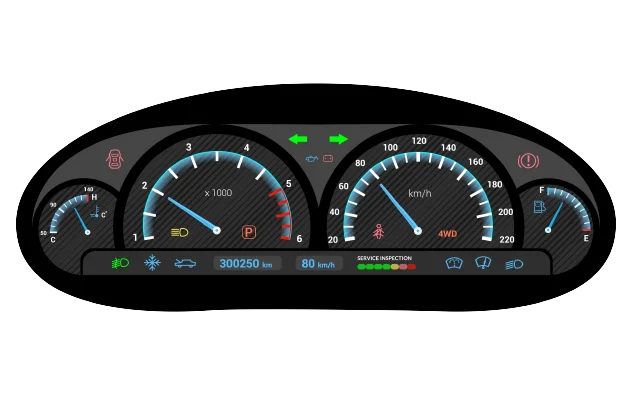
The odometer reading is a critical factor to consider when venturing into the realm of pre-owned motorcycles. It offers valuable insights into the bike’s past adventures, giving you a glimpse of the wear and tear it has endured over time. To make an informed decision, understanding the significance of mileage is key.
In general, opting for a motorcycle with lower mileage is preferable. A bike that has covered fewer miles is more likely to be in better condition and demand fewer maintenance requirements. However, don’t be quick to dismiss a bike with higher mileage if it has been well-maintained and remains in excellent shape – negotiation is always on the table.
To help you determine whether the odometer reading is excessively high, here are some useful benchmarks:
Sport bikes: Mileage exceeding 25,000 miles is generally considered high for most sports bikes.
Cruiser bikes: For cruiser bikes, mileage surpassing 35,000 miles is often regarded as high.
Touring bikes: When it comes to touring bikes, mileage exceeding 45,000 miles is typically considered high.
Remember, these benchmarks are general guidelines and can vary depending on the motorcycle’s type, make model, and manufacturing year.
If you’re contemplating purchasing a used motorcycle with high mileage, it is vital to have it thoroughly inspected by a qualified mechanic. Their expertise will help identify any signs of wear and tear, ensuring that the bike is still in good condition.
When inspecting a high-mileage used motorcycle, pay attention to the following key areas:
Engine: Ensure the engine is clean and devoid of leaks. Listen for any abnormal sounds, such as knocking or ticking.
Transmission: Shift gears smoothly, without any grinding or resistance.
Brakes: Verify the functionality of the brakes and assess the condition of the brake pads.
Tires: Check the tires for signs of wear and confirm they possess sufficient tread.
Frame: Look closely for cracks or rust on the motorcycle’s frame.
Wiring: Inspect the wiring to ensure it is undamaged and in good condition.
Should you encounter any issues during the inspection, be prepared to negotiate the price accordingly. Additionally, you may wish to consider addressing any problems before finalizing the purchase, ensuring a smooth and enjoyable ride ahead.
Remember, by scrutinizing the odometer reading and conducting a thorough inspection, you can confidently embark on your journey with a pre-owned motorcycle that matches both your budget and expectations.
2. Service records

Service records hold a wealth of invaluable information when it comes to purchasing a used motorcycle. These documents provide a glimpse into the bike’s maintenance history, allowing you to assess its condition and identify potential issues that may impact your decision.
When inspecting a used motorcycle, it is crucial to request all available service records from the seller. These records should include the following essential details:
Date of service: By examining the dates of past services, you can determine how frequently the bike has been maintained, offering insights into its overall care.
Type of service: Understanding the specific maintenance tasks performed on the bike helps you assess its thoroughness and identify any recurring problems.
Mileage: Examining the mileage at the time of each service provides a comprehensive view of the bike’s usage patterns, allowing you to gauge the level of wear and tear.
Name of the mechanic: Having the contact information of the mechanic who serviced the motorcycle can be beneficial if you have any inquiries or require further details about the work that was done.
In the event that the seller does not possess any service records, be prepared to negotiate the price accordingly. It is also advisable to consider having the motorcycle inspected by a qualified mechanic to ensure a thorough assessment.
Here are some compelling reasons why service records are essential for a used motorcycle:
Peace of mind: Knowing that the bike has a documented maintenance history provides reassurance, instilling confidence in the overall condition and reliability of the motorcycle.
Reduced repair costs: Regular and diligent maintenance can help prevent potential problems and minimize the need for costly repairs down the road.
Increased resale value: When the time comes to part ways with your beloved motorcycle, having comprehensive service records will boost its appeal in the eyes of potential buyers, ultimately enhancing its resale value.
If you are considering the purchase of a used motorcycle, don’t forget to request all available service records from the seller. This valuable information will empower you to make an informed decision, ensuring you steer clear of any potential pitfalls and ride into the sunset with a trusted companion by your side.
3. Physical condition
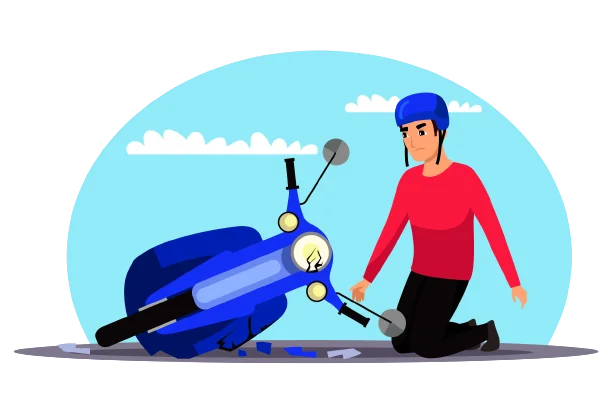
When embarking on the exhilarating journey of purchasing a used motorcycle, evaluating its physical condition becomes paramount. A bike that stands strong in its physical integrity is more likely to be a reliable companion, sparing you from excessive maintenance headaches. To ensure you make an informed decision, here are key aspects to scrutinize when assessing the physical condition of a used motorcycle:
Bodywork: Carefully inspect the bodywork, tracing your gaze for any signs of scratches, dents, or cracks. These imperfections may indicate previous accidents or mishandling, warranting a closer examination to uncover potential hidden damage.
Tires: Take a close look at the tires, verifying their overall condition and assessing the remaining tread depth. Adequate tire tread ensures optimal traction and safety on the road, while worn-out tires may signal the need for an imminent replacement.
Brakes: Ensuring the brakes are in excellent working order is crucial for your safety. Assess the brake system, checking for proper functionality and examining the brake pads for signs of wear. Reliable stopping power is essential for smooth and secure rides.
Chain: Inspect the chain, verifying its cleanliness and lubrication. A well-maintained chain indicates diligent care and can greatly contribute to the overall performance and longevity of the motorcycle.
Engine: Thoroughly examine the engine, paying close attention to cleanliness and the absence of any leaks. Listen for unusual sounds, such as knocking or ticking, which might hint at underlying mechanical issues. A clean, leak-free engine promises a smoother and more dependable ride.
Transmission: Test the gears, ensuring smooth transitions without any grinding or resistance. A well-functioning transmission enhances your riding experience, providing a seamless journey through the gears.
Frame: Scrutinize the frame for any cracks or signs of rust. A strong and intact frame is vital for maintaining stability and safety on the road.
Wiring: Inspect the wiring system, ensuring it is in optimal condition, free from damage or exposed wires. A well-maintained electrical system minimizes the risk of unexpected issues and ensures a hassle-free ride.
Should you encounter any issues during your inspection, you can leverage them during price negotiations. Additionally, consider having any identified problems resolved before finalizing your purchase.
Here are a few tips to enhance your inspection process:
Conduct your inspection in daylight, as it allows for better visibility of potential damage.
Observe the motorcycle from all angles, unveiling any hidden imperfections. Employ a flashlight when examining dark areas for a thorough assessment.
Engage the seller in conversation, inquiring about any existing damage to gain comprehensive knowledge of the bike’s condition.
By following these guidelines, you can significantly increase your chances of acquiring a used motorcycle that boasts impressive physical condition, ensuring countless miles of riding pleasure.
4. Test Ride

Embarking on a test ride is an exhilarating opportunity to truly connect with a used motorcycle, allowing you to assess its performance and suitability for your unique needs. To ensure an informed decision, we’ve compiled a comprehensive checklist to maximize your test ride experience and make it a seamless part of your purchasing journey.
Control Check: Before you hit the road, take a moment to familiarize yourself with the motorcycle’s controls. Ensure they are well within reach and provide the utmost comfort. From handlebars to footpegs, a perfect fit allows you to maintain optimal control and enhances your overall riding experience.
Harmonious Harmony: When you ignite the engine, attune your senses to detect any unusual noises. A smooth, purring hum signifies a well-maintained machine, while irregular rumblings could indicate underlying mechanical issues. Pay close attention, for the engine’s melody is the symphony that accompanies your every journey.
Gear-Shifting Grace: Delve into the heart of the motorcycle’s mechanics by testing the gear-shifting process. Engage each gear, ensuring a seamless transition without any grinding or hesitation. A responsive gearbox elevates your ride, delivering a symphony of synchronized motion.
Braking Brilliance: As you command the road, a motorcycle’s braking system becomes your trusty ally. Test its mettle by applying the brakes with precision, feeling the firm grip and smooth deceleration. Should you encounter any signs of sluggishness or instability, consider it a signal to further evaluate the bike’s condition.
Velocity Ventures: Explore the motorcycle’s agility and handling capabilities by varying your speed during the test ride. Gauge its responsiveness and stability at both moderate and higher speeds, observing how it gracefully navigates the twists and turns of the road. A harmonious dance between rider and machine ensures an unforgettable journey.
Negotiation Insight: If any concerns arise during the test ride regarding the motorcycle’s performance or handling, don’t hesitate to address them. Armed with firsthand experience, you can engage in a constructive negotiation to find a fair agreement. Alternatively, consider enlisting the expertise of a qualified mechanic to conduct a thorough inspection for added peace of mind.
Remember these essential tips when embarking on a test ride:
Prioritize Safety: Wear appropriate riding gear to protect yourself in case of any unforeseen incidents.
Buddy System: Bring along a trusted friend or family member to ensure an added layer of safety and support.
Gentle Beginnings: Start the engine gradually to prevent stalling and ensure a smooth ride.
Masterful Finesse: Exercise control finesse to maintain stability and prevent any unwarranted instability.
Road Awareness: Stay focused on the road ahead, ensuring utmost caution to avoid potential hazards.
Embrace the Journey: Enjoy the exhilaration that comes with test-riding a used motorcycle while making a well-informed decision.
By adhering to these valuable tips, you’ll optimize your test ride experience, leading to a safe, enjoyable journey, and the perfect pre-owned motorcycle that will become your trusted companion on the open road.
5. Get a motorcycle history report

A motorcycle history report is an invaluable tool that provides crucial information about a motorcycle’s past ownership, maintenance, and accident history. When purchasing a used motorcycle, this report can be instrumental in identifying potential problems and ensuring a smooth buying experience.
In India, several reputable companies offer motorcycle history reports, including:
Droom: Droom, an esteemed online marketplace for motorcycles, offers a detailed motorcycle history report. This report encompasses vital information such as the bike’s registration number, previous owners, accident history, and service records.
VehicleHistory.in: Specializing in providing comprehensive vehicle history reports, VehicleHistory.in offers an extensive motorcycle history report. This report includes essential details such as the bike’s registration number, previous owners, accident history, and service records.
CARS24: As a trusted online marketplace for automobiles, CARS24 also provides a motorcycle history report that covers crucial aspects like the bike’s registration number, previous owners, accident history, and service records.
To obtain a motorcycle history report in India, you will need to provide the company with the bike’s registration number. Utilizing this information, the company will access government databases and other relevant sources to compile the comprehensive report.
The cost of a motorcycle history report in India varies depending on the company chosen, typically ranging from Rs. 200 to Rs. 500.
Acquiring a motorcycle history report offers numerous benefits for buyers of used motorcycles:
Peace of mind: By understanding a bike’s history, you can make your purchase with confidence, knowing the bike’s background.
Reduced risk: A motorcycle history report aids in identifying potential problems such as a history of accidents or significant damage, minimizing the risk of purchasing a problematic bike.
Increased resale value: A motorcycle history report enhances the bike’s resale value, as it demonstrates transparency and instills trust in potential future buyers.
If you are contemplating the purchase of a used motorcycle, it is strongly recommended to obtain a motorcycle history report. This invaluable document empowers you to make an informed decision and helps steer clear of bikes with significant underlying issues.
Read me: Monsoon Safety Tips for Two-Wheeler Riders
